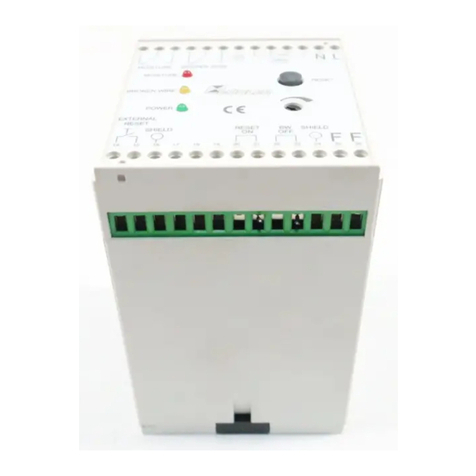
BCM-W
Contents
1 Introduction.....................................................................................................................................................................................................................2
1.1 Intended Use.........................................................................................................................................................................................................2
1.2 Functionality.........................................................................................................................................................................................................2
1.2.1 Humidity monitoring.......................................................................................................................................................................... 2
1.2.2 Temperature monitor.........................................................................................................................................................................2
1.2.3 IO-Link......................................................................................................................................................................................................2
1.3 Design types..........................................................................................................................................................................................................3
1.4 Model key...............................................................................................................................................................................................................3
1.5 Scope of Delivery.................................................................................................................................................................................................. 3
2 Safety instructions .........................................................................................................................................................................................................4
2.1 Important advice .................................................................................................................................................................................................4
2.2 General hazard warnings ................................................................................................................................................................................. 5
3 Transport and storage ..................................................................................................................................................................................................6
4 Setup and connection ................................................................................................................................................................................................... 7
4.1 Installation ............................................................................................................................................................................................................ 7
4.1.1 Installation recommendation ..........................................................................................................................................................8
4.2 Electrical connections.........................................................................................................................................................................................8
5 Operation and Control..................................................................................................................................................................................................9
5.1 BCM-WD/BCM-WR..............................................................................................................................................................................................9
5.1.1 Start-up procedure ..............................................................................................................................................................................9
5.1.2 LED statuses ...........................................................................................................................................................................................9
5.1.3 General key functions .......................................................................................................................................................................10
5.1.4 Keylock enabled .................................................................................................................................................................................. 10
5.1.5 Menu overview ....................................................................................................................................................................................11
5.1.6 Changing basic settings ................................................................................................................................................................... 12
5.1.7 Switching outputs...............................................................................................................................................................................15
5.1.8 Analogue outputs ............................................................................................................................................................................. 20
5.1.9 Diagnostic options.............................................................................................................................................................................22
5.2 BCM-WS................................................................................................................................................................................................................25
5.2.1 Start-up procedure ............................................................................................................................................................................25
5.2.2 Parameter configuration.................................................................................................................................................................25
5.2.3 Factory setting.....................................................................................................................................................................................25
5.2.4 Switching outputs..............................................................................................................................................................................25
5.2.5 Analogue outputs ..............................................................................................................................................................................25
6 Cleaning and Maintenance.......................................................................................................................................................................................26
7 Service and repair.........................................................................................................................................................................................................27
7.1 Removal information .......................................................................................................................................................................................27
7.2 Troubleshooting ................................................................................................................................................................................................27
7.3 Spare parts and accessories ...........................................................................................................................................................................28
8 Disposal ...........................................................................................................................................................................................................................29
9 Appendices .................................................................................................................................................................................................................... 30
9.1 Technical Data BCM-WS ................................................................................................................................................................................. 30
9.2 Technical Data BCM-WR/BCM-WD ..............................................................................................................................................................32
9.3 Dimensions BCM-WS........................................................................................................................................................................................33
9.4 Outputs BCM-WS...............................................................................................................................................................................................34
9.5 Outputs BCM-WD/BCM-WR...........................................................................................................................................................................34
9.6 Pin assignment BCM-WS.................................................................................................................................................................................34
9.7 Pin assignment BCM-WR/WD ....................................................................................................................................................................... 35
9.8 Display ranges....................................................................................................................................................................................................35
9.9 Current settings.................................................................................................................................................................................................35
9.10 Menu Sequence Overview ..............................................................................................................................................................................36
10 Attached documents ...................................................................................................................................................................................................37
iBühler Technologies GmbHBE150101 ◦ 12/2021




























